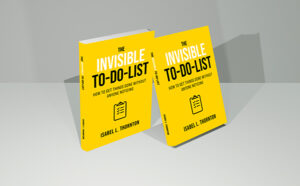If you’ve ever thought, “Why does this always happen to me?” or “I can’t change anything—it’s just how things are,” you’re not alone. These thoughts are deeply human, especially when life feels overwhelming or unfair. But they also hint at a dangerous habit that quietly undermines growth: the victim mindset.
In her powerful guide, Habit Hacks for Happiness: How to build habits that actually serve you, Tess Alder explains that shifting from a victim mentality to an agent of change is one of the most transformative moves you can make for your confidence, resilience, and happiness. And it starts with how you respond to discomfort.
What is the Victim Mindset (And Why Is It So Easy to Slip Into)?
A victim mindset isn’t about real trauma or injustice—it’s about the habits we form when discomfort, failure, or rejection show up. It sounds like:
- “It’s not my fault.”
- “They never give me a chance.”
- “What’s the point in trying?”
At its core, it’s a protective mechanism. If everything is someone else’s responsibility, you don’t have to risk failure. But the cost of this safety is massive: lost growth, stalled progress, and diminished self-belief.
As Alder writes, “When you blame others, you give them your power. When you take responsibility, even in pain, you begin to get that power back.”
The Science Behind Taking Ownership
Blame feels good in the moment—it gives us a false sense of control. But over time, it wires the brain for learned helplessness, a psychological state where people stop trying because they believe effort doesn’t matter.
In contrast, when we practice agency thinking—acknowledging what we can influence, even if it’s small—we activate the brain’s problem-solving systems. This shift engages the prefrontal cortex, the area associated with planning, motivation, and resilience.
In other words, agency is more than a mindset. It’s a neurological strategy for forward movement.
From Powerless to Powerful: The 3-Part Shift
1. Reframe the Story
Instead of “Why is this happening to me?” ask, “What part of this can I influence?” This subtle change unlocks creativity and hope.
2. Own Small Actions
You may not control the whole situation, but you can choose your response. Whether it’s showing up on time, sending the email, or setting a boundary—small actions build trust in yourself.
3. Redefine Success
Progress isn’t always about fixing everything. Sometimes it’s about showing up consistently, despite discomfort. Every time you choose action over avoidance, you rewire your identity.
The Responsibility Audit: A Practical Exercise
Alder offers a game-changing tool in Habit Hacks for Happiness called the Responsibility Audit. Here’s how it works:
- Write down 3 situations where you feel stuck or resentful.
- For each, list:
- What’s completely outside your control.
- What’s partially within your influence.
- What’s entirely yours to own.
- Create one action step in the “entirely yours” column.
Example:
Feeling unappreciated at work? You can’t force your boss to notice you, but you can request feedback, offer to lead a task, or start tracking your wins.
Doing this weekly builds the habit of agency-focused thinking, turning discomfort into direction.
Why Discomfort is the Bridge to Growth
The reason the victim mindset persists is simple: taking ownership is uncomfortable. It forces us to admit what we haven’t done, or to take risks that might not pan out.
But discomfort isn’t the enemy. It’s the price of progress.
As Alder explains:
“Each moment of discomfort is a decision point. Will I avoid, or will I engage? One leads to stagnation. The other to strength.”
When we lean into small challenges—speaking up in a meeting, asking for help, trying again after failure—we gather real-world proof that we are capable of more than we believed. That’s how identity shifts: not through theory, but through action.
Accountability Without Shame
One of the most important ideas in this chapter of Habit Hacks for Happiness is that accountability isn’t self-criticism—it’s self-trust.
Shame says: “You’re failing again.”
Accountability says: “This is where you are. What will you do next?”
You don’t need to be perfect to break free from the victim mindset. You only need to practice the habit of honest reflection and courageous action, one moment at a time.
Daily Habit: The Agency Journal
Here’s how you can strengthen your agency muscle each day:
- At the end of the day, write down:
- A choice you made.
- What result it created.
- What you could have done differently.
- Over time, look for patterns.
- Where are you avoiding?
- Where are you taking initiative?
- Celebrate even the smallest wins.
This journal isn’t about judgment. It’s about tracking the growth of your decision-making power—and rewiring your brain for ownership and resilience.
You Are the Main Character—Act Like It
One of the most powerful shifts you can make is realizing this: You are not a background character in your own life.
Yes, life throws unfair challenges. Systems are broken. People disappoint. But your ability to respond, adapt, and act is still yours—and that’s where your happiness begins.
As Tess Alder reminds us in Habit Hacks for Happiness, happiness isn’t something you wait for. It’s something you create, one act of ownership at a time.
Ready to Reclaim Your Power?
If you’re tired of waiting for someone else to fix things, or of repeating the same stuck cycles, this is your invitation to do something different. Start small. Start today.
Grab your copy of Habit Hacks for Happiness: How to build habits that actually serve you and explore practical tools to break through blame, build personal agency, and turn discomfort into momentum.
Author

Alan Saunders is recognized for producing books on Artificial Intelligence and digital wellness, where playful narratives and clear insights are featured. Guidance for concerned parents hoping to safeguard children in an ever-evolving digital world is often emphasized in his writing. Complex AI concepts and practical safety measures are presented in a manner that blends intrigue with accessibility, allowing readers to explore technology’s possibilities while maintaining peace of mind.





